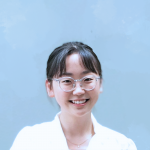February 11 is recognized by the United Nations as the International Day of Women and Girls in Science, which aims to spotlight the contributions of women in STEM and encourage full and equal access to participation in science, technology, and innovation for women and girls. This year, we chatted with several women researchers in the CBR community to learn more about their research, share their stories, and celebrate all that they do. Read their stories below.
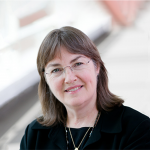
DR. DANA DEVINE
|

DR. KAREN CHEUNG
|
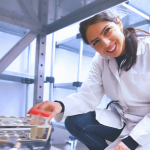
DR. NARGES
|
|
|

NANCY YANG |

SREEPARNA VAPPALA |
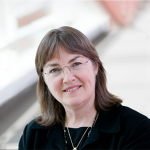 Dr. Dana Devine
Dr. Dana Devine
Director, Centre for Blood Research
Chief Scientist, Canadian Blood Services
Professor, UBC Pathology and Laboratory Medicine
Associate Member, UBC Biochemistry and Molecular Biology
To be a leader, you have to understand that it isn't about you; it’s about everybody else you're trying to lead. Leadership isn’t barking orders and expecting people to carry them out, but trying to reach a group consensus and ensuring that people understand your organization’s direction... When everybody feels like they’re pulling in the same direction and their contributions are valued, it’s a very enriching experience.
Tell me about your work in the blood transfusion field.
My work aims to provide the best quality blood products to patients. I’m trying to understand how donor characteristics – many of which are genetically inherited – influence the quality of a blood product over the allowable storage period. Ideally, we can either improve the way we store blood, or improve the way we manage donations from different donors. In the end, we want to ensure that transfusions for all blood products are as good as they can possibly be.
What sparked your interest in science?
I have a very checkered scientific past! I thought I wanted to go to law school, until I took a high school biology class with a fantastic teacher. From then on, I knew I wanted to be a scientist.
I studied biology for my undergraduate degree, and applied for a program at the Woods Hole Marine Biological Laboratory, where fourth-year students could spend an entire year taking graduate-level courses with credits that went towards your Bachelor’s. I enjoyed my time there so much that I stayed and did a Master’s in marine biology.
That’s very interesting! How did marine biology lead to blood research and the CBR?
At the time I finished my Master’s, it was very difficult to get grant money for biological science research in the US. I made a very conscious decision to change fields, though I wasn’t sure what I wanted to pursue.
After that, I moved around quite a bit. I ended up in Texas first, where I applied to a graduate program and worked on schistosomiasis, a disease caused by parasites in the liver. Then I worked as a Research Technician under the head of the hematology department at Duke University, studying a part of the immune system called the complement system. Eventually, I convinced my supervisor to take me on as a PhD student to work on platelets, which is how I got into the whole blood and transfusion field.
Following my PhD, I’d planned to return to Boston for a Postdoctoral Fellowship, when I got a call from a professor at McMaster who had previously trained in the same lab as me. He told about a job in Vancouver, where they were looking for someone who did the exact the kind of work I did, so I flew to Canada and interviewed for a job here. I met with Cedric Carter, who was already in Vancouver and was a very close friend of this McMaster professor. In what was a very clever recruiting ploy, we went skiing in Whistler and had dinner with some other hematologists, and I fell completely in love with the city. The rest is history!
What has been your biggest challenge as a scientist or leader?
To be a leader, you have to understand that it isn't about you; it’s about everybody else you're trying to lead. Leadership isn’t barking orders and expecting people to carry them out, but trying to reach a group consensus and ensuring that people understand your organization’s direction. Good leadership is challenging in its own way, because you need to be available, have the capacity to help others, and work with large groups. While challenging, those experiences always make you learn about yourself.
The team that you build is also critically important. You need like-minded people who are driving towards the same goals, whether that’s your students and postdocs in the research laboratory, or an administrative team. When everybody feels like they’re pulling in the same direction and their contributions are valued, it’s a very enriching experience.
What advice you would give to early career woman scientists?
You have to learn enough about yourself to recognize where you're going to get yourself in trouble. For me, I have a complete deletion of the gene for the word “no”! I get involved in a whole bunch of projects, and I have to scale things back every once in a while. It’s important to know your own strengths and weaknesses.
For women scientists, there's a balance you have to figure out around expectations that you have of yourself and your career, and other factors like work-life balance while raising a child, if you choose that. It’s not always straightforward, and it's important to find a supportive environment to make sure you don’t get consumed by all these demands.
What do you think would help create more supportive spaces for women in STEM fields?
Good daycare that’s easily accessible on a campus, with the ability to cover your child beyond three o'clock, so as a working female scientist, you don’t feel like you have to drop your kid off at school at 8:30 and finish everything in the lab or office before picking them up. You also need clarity with your partner about how child rearing is divided, and there has to be good support at all these different levels.
When considering issues around promotion and tenure, I think more serious consideration needs to be given for maternity leave and career breaks. There needs to be space for those situations, to try and ensure career or grant evaluations are done in a balanced manner. We also need to figure out how to ensure sufficient slots for women in junior faculty positions, as that still tends to be male-dominated.
I do think it’s gotten better for women in STEM, compared to when I was a trainee. It shows that there is space for women to do scientific work, and have an impact. That being said, there’s still a lot we can do moving forwards.
Anything else you’d like to share?
For anyone working in an academic role, carving time for yourself to do things that aren’t science-related is important. Even if it's spending a Saturday afternoon reading a junk novel, or pursuing a hobby that you like. Work-life balance wasn’t in the spotlight when I was training, and I think we’ve realized that it’s to everyone’s benefit to invest in it.
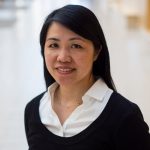 Dr. Karen Cheung
Dr. Karen Cheung
Member, Centre for Blood Research
Director, Graduate Biomedical Engineering Program
Associate Director & Professor, School of Biomedical Engineering
Professor, Department of Electrical & Computer Engineering
Associate Member, UBC Biochemistry and Molecular Biology
I think I would encourage people to do the most with opportunities available to them. Be pragmatic, and choose opportunities that fit best with your goals. In doing so, you may find yourself in a place where you can learn, work, and connect with a wider circle of thoughtful, insightful and inspiring people.
Can you tell me a bit about your current research and its importance?
My research team is part of many ongoing projects and collaborations, some of which focus on engineering or biomaterials approaches to disease and healthcare.
In our newest project, which we hope to launch with Drs. John Madden, Wolf Tetzlaff, and Dena Shahriari, we’re investigating biomaterials approaches for nerve fiber regrowth in spinal cord injury. With Drs. Don Sin and Tillie Hackett at St Paul's Hospital, we’re developing a multilayered microfluidic model of the human airway that contains airway-specific cell types and incorporates a novel 3D extracellular matrix. Once we establish this novel model, we can use it to understand how exposure to different environments might affect airway tissue, and perhaps use it to develop treatments for chronic obstructive pulmonary disease. Another project we’re working on is developing a microfluidic model of the blood-brain barrier to investigate the effects of high-density lipoproteins on the brain microvasculature, in collaboration with Dr. Cheryl Wellington. Examining such an in vitro model can help us understand aspects of neurodegenerative disease that would otherwise be difficult to study. I’m very excited to work with all of my fantastic colleagues at UBC!
What inspired you to become a scientist?
When I was younger, I imagined that my dream job would provide opportunities for me to make important, new scientific discoveries, where I could work together in a team with engaging colleagues. Now that I’m at UBC, there is nothing better than looking over some experimental data with my research team, discussing what it could mean, and what steps we can take to further analyze it.
What has been your biggest challenge as a researcher? Is there any advice you would give to early-career women scientists or trainees?
While it’s fun and exciting to work on scientific and engineering challenges, it can be difficult to judge how much time is needed for new tasks, and sometimes I’ve found myself overcommitted. Having agreed to review manuscripts and stacks of proposals, or to write a paper, it is challenging to get everything done ontop of teaching, managing ongoing research, and other commitments.
When faced with many competing responsibilities, it is important to think about your future self and the most valuable way to spend your time, in the context of your own priorities and goals.
You’ve been involved in various initiatives related to women in STEM, including your work to achieve student gender parity at the School of Biomedical Engineering (SBME) and speaking as a panelist for the Picture a Scientist EDI panel, a film about gender and equity in the sciences. What are some steps we can take to create better spaces for women in scientific fields?
When chatting with students, I notice that some trainees frequently underestimate and understate their technical skills, even though they have spent considerable time honing such skills in the laboratory. This "confidence gap" has been documented in the literature, and it's hard to overcome self-perceptions that may undervalue your own technical ability.
I think it's important to create a supportive environment where everyone can practice explaining their expertise in a compelling manner, and where peers can provide feedback that is both positive and constructive. This can increase trainees' self-confidence in their expertise, and their willingness to share it. They certainly have informed perspectives, and we need to hear more from them.
Is there anything else you’d like to share?
I’m fortunate to have been a part of many projects at UBC as an equal committee member or project collaborator. Diversity in teams contributes to research excellence, and in the current climate, issues of equity, diversity, and inclusion are widely discussed.
For those invited to participate in such initiatives, I think I would encourage people to do the most with opportunities available to them. Be pragmatic, and choose opportunities that fit best with your goals. In doing so, you may find yourself in a place where you can learn, work, and connect with a wider circle of thoughtful, insightful and inspiring people.
Dr. Narges Hadjesfandiari
Research Associate, Devine Lab
I believe that with lots of discussion and actions taken around EDI now, as women we are in a golden era to shine, so it is better to come out of our shells and make the best use of opportunities available to us.
What is your research about?
I’m part of the Devine lab at UBC’s Centre for Blood Research and the Centre for Innovation at the Canadian Blood Services. Most of my lab’s projects aim to answer questions or challenges raised by blood banks, like how we can improve the safety and quality of blood transfusions, or enhance our inventory management.
Some projects I’m currently involved in focus on measuring the concentration of heavy metals in donor blood for vulnerable populations, conducting molecular investigations on red blood cells from different donors, investigating the effect of infusion pumps on the quality of infused blood, and understanding which donor or production factors affect blood cell quality.
What sparked your interest in science?
As a child, I spent lots of time outdoors and in gardens. I was very interested in watching bugs in nature, observing their differences and their amazing abilities. I even dissected some of them (which made my grandma so mad!). In school, I was fascinated by chemistry and biology, which I wanted to keep studying.
Your favourite thing about science?
I like that science isn’t repetitive; it always presents new challenges to solve. For my work specifically, I’m inspired by its close application to patient use. As much as I appreciate basic research, which was a large part of my previous career and education, I really like seeing how my results can help people directly.
For example, with some experiments and modelling, my lab showed that it’s not necessary to match blood types when transfusing cryoprecipitate – a frozen blood product prepared from blood plasma – because the anti-A and anti-B levels in it are too low to hurt recipients. This means that hospitals can order and transfuse cryoprecipitates without blood typing first, which overcomes the issue of potential blood type supply shortages for this product. To clarify, this policy was in place before, but some hospitals did not follow it because there was not enough data to support it.
It was very exciting to work on that project. This is a good example where a blood bank approached us with this specific problem, and our lab was able to design and conduct a study to solve it, then present a solution that could help blood banks across Canada.
What has been your biggest challenge as a researcher?
Making a balance between work and personal life. I have found it really difficult, especially as my responsibilities increase, both at work and at home with my young son. I believe that the earlier in your career you can develop this skill, the easier it will be, before you get overwhelmed with increasing responsibilities as a daughter, sister, wife, partner, friend or mother, on top of being a researcher.
What I’m trying to do now is communicate better with immediate colleagues and my husband if I am under stress, and to delegate responsibilities or ask for support when I need it.
What advice would you give to early career women researchers?
In addition to work-life balance, I would say: Aim high. Set big goals for yourself and do your best. If you don't achieve them, that's okay – just having a vision is good, because it will set you on the right path. And you will still have many wonderful opportunities and experiences, because you are already on that path.
Is there anything else you’d like to share?
This is something I tell myself and would like to remind younger women in STEM, too: I believe that with lots of discussion and actions taken around EDI now, as women we are in a golden era to shine, so it is better to come out of our shells and make the best use of opportunities available to us.
Cecilia Haymin Kim
2020 CBR Summer Student Alum
Don’t be discouraged by any gender ratios or stereotypes you might encounter. Women and girls give so much to STEM fields. We offer unique perspectives, which is essential because the inventions, policies and results that come out of science ultimately impact all people, including women. It’s so important that we’re part of the process.
Tell me about what you’re studying. Why did you choose this field?
I’m a second-year undergraduate science student at Princeton University, and I’m planning on studying chemistry, with a focus on organic chemistry and chemical biology.
I had two wonderful chemistry teachers in high school who made the subject really engaging – so engaging that I kept exploring it at university! To me, chemistry is such a foundational science: it has the power to create new molecules, compounds and substances that haven’t existed before. I feel like it’s as close as mankind can get to mimicking nature’s processes.
Where does your love for science come from?
Both my parents enjoyed studying science, so I grew up with lots of science magazines lying around my house. The magazines had such cool covers, with cells, explosions or bacteria on the front. As a kid, I remember the amazement I felt, even though I didn’t understand everything that I was looking at. When I could finally make sense of those pictures through science classes at school, that was really exciting. Later on, I realized that science can provide interesting solutions to very complex problems, which also fed my curiosity.
What factors help build a supportive STEM environment?
Mentorship has been very important. Having someone who’s ‘been there, done that’ and gone through similar experiences or challenges is helpful, especially if they relate to you on a personal level. I’ve been very lucky because my university faculty advisor, Dr. Susan VanderKam, and my CBR-SBME Summer Studentship supervisor, Dr. Heather Leitch, have both been very supportive, strong women who are doing amazing things with their work.
Having peers that you can connect and build camaraderie with is also very valuable – it’s really about that support network and sense of community.
Any advice you would give to young girls interested in STEM?
Don’t be discouraged by any gender ratios or stereotypes you might encounter. Women and girls give so much to STEM fields. We offer unique perspectives, which is essential because the inventions, policies and results that come out of science ultimately impact all people, including women. It’s so important that we’re part of the process.
In addition to trying to find a great mentor, I would also say: keep an open mind to different career options. Even if women haven’t worked in a certain job traditionally, I think the idea of pioneering into a new field and leading the way for the future is really exciting.
What career paths are you interested in exploring?
I find interdisciplinary work fascinating. The sciences are often separated into discrete fields like chemistry, biology, and physics, but they’re actually all related. With that in mind, I’m interested in looking at how health, biology and chemistry intersect, in addition to international health and health policy.
The chemical synthesis aspect of drug discovery interests me as well. Developing a drug that adds to a physician or healthcare professional’s toolbox is really exciting, with lots of potential to help improve quality of care!
Looking at how different disciplines and careers intersect – that seems to be a recurring theme for you.
It is! Integrating different viewpoints is really interesting. For example, I think that drug discovery works best when you can bridge the gap between the bench and the bedside, while considering both industrial and clinical perspectives. To create drugs that truly help people, you have to get a clinical look at the diseases that people are living with, what side effects they might experience from medication, and so on and so forth.
It wasn’t until my summer studentship with Dr. Leitch, who is a clinician-researcher, that I realized it was possible to conduct research and pursue clinical work in the same job. She works with patients in a clinic, but also conducts further research that’s informed by her clinical work. We would practice virtual grand rounds together and go over patient cases, and I think she really passed her passion for clinical work on to me.
Nancy Yang
MSc Student, Côté Lab
Listening to other women scientists talk about themselves and their work, and realizing I wasn’t alone in my uncertainties – that was very enlightening and helpful. It might feel scary to reach out, but whether you speak with a mentor or others in your cohort, I’ve found that most women are more than happy to share their knowledge and experience with others.
Tell me about your research.
My work is about the effect of HIV and other viruses on biological aging. People living with HIV seem to age faster than those living without HIV. With this in mind, I’m trying to characterize the number and type of chronic and latent viral infections that people living with or without HIV may have. I then try to see if this information is associated with markers of aging, like telomere length.
While we know the effect of HIV and a few viruses on aging, no study to date has explored the cumulative effect of as many as the eight viruses that I'm looking at. I'm hoping that my research will help fill some of those knowledge gaps.
Who or what sparked your interest in science?
I probably have to credit my high school science teachers! In particular, the biology teacher from my senior years made me realize that science was cool and interesting, but most importantly, that it was fun.
During my undergrad, I took a year-long course about viruses because it fulfilled my degree requirements. I ended up really enjoying the course content, and that, combined with my experience of working in Dr. Hélène Côté’s lab as a former CBR-SBME Summer Student, inspired me to conduct more research in her lab about viruses and HIV.
What have been your biggest challenges as a researcher?
Getting used to failure, making mistakes, and accepting that trial and error are part of the process. Research has humbled me a lot, because almost nothing works perfectly the first time. There's a lot of uncertainty and unknowns, but ultimately, diagnosing your mistakes is how you learn.
Any advice for young women or girls interested in STEM?
Try to find like-minded people, especially like-minded women, and then just talk to them. Listening to other women scientists talk about themselves and their work, and realizing I wasn’t alone in my uncertainties – that was very enlightening and helpful. It might feel scary to reach out, but whether you speak with a mentor or others in your cohort, I’ve found that most women are more than happy to share their knowledge and experiences with others.
What’s been a highlight of your scientific journey so far?
The singular best part of pursuing science has been working with everyone in my lab, the Côté Lab. Having an interest in science is one thing, but the fact that this interest led to me meeting and joining such a supportive and interesting group of people – that’s what makes me feel like it all worked out in the end.
A lot of credit goes to my supervisor, Dr. Hélène Côté, for creating a very collaborative and supportive research environment. Even though everyone has their own projects, some on different topics, Hélène encourages us to collaborate and actively creates opportunities where we can troubleshoot issues as a group, so that nobody feels isolated in their work.
What do you like to do outside of research?
I’ve played Ultimate Frisbee since high school and play competitively on the UBC Team. Although I don’t know how to skate, I really like to watch competitive figure skating, as well as anything Marvel-related. I also got a puppy during the pandemic, so I’ve been living the dog mom life recently!
 Sreeparna Vappala
Sreeparna Vappala
PhD Candidate, Kizhakkedathu Lab
I think that the coming generation should have the chance to see women scientists and the possibilities open to them, whatever those might be. Ultimately, I hope that my outreach can contribute to that and bring more people, especially women, into science and academia.
Can you tell me about your research and its significance?
When you’re injured, there are ‘good’ blood clots that stop you from bleeding, but blood clots can be ‘deadly’ if they form in your blood vessels, and may cause heart attacks or strokes. Currently, most drugs that prevent ‘deadly’ blood clots also stop ‘good’ blood clots from forming, which often leads to excessive bleeding. My work aims to develop drugs that can prevent ‘deadly’ blood clots, but still allow the ‘good’ ones to form, bypassing this problem.
Outside of your research, you also do a lot of science outreach. What motivates you to do this kind of work?
Growing up, I actually never pictured myself as a scientist. Part of that was because I didn’t see many women scientists around me, and didn’t have opportunities to meet or speak with them.
That motivated me to get into outreach. I try to put myself out there as a role model, so students can see that someone who looks like me can pursue a scientific career. As part of the CBR Outreach Team, I’ve participated in the Blood Labs program, where we provide workshops to schools in the Lower Mainland. I’m also involved as a Future Science Leader and a Community Scientist at Science World, organizing and developing after-school programs for students and engaging with public audiences.
I think that the coming generation should have the chance to see women scientists and the possibilities open to them, whatever those might be. Ultimately, I hope that my outreach can contribute to that and bring more people, especially women, into science and academia.
What has been your biggest challenge as a researcher?
Accepting failure was really difficult. Learning to cope with mistakes, and not letting them affect my day-to-day life – that was a big challenge. Now I understand that it’s okay to fail, and that failures can lead to your next results. After changing my mindset, failing is much more exciting, like, ‘Okay, what can I do now to make things better?’
What advice would you give to young girls or women who are interested in STEM?
Always have confidence in yourself, no matter what biases or depictions you might see in the media or in society. When I was younger, nobody told me I couldn’t be a scientist, but I always had a nagging feeling that a girl like me shouldn’t go into a male-dominated profession. But I realized that isn’t true, and that you can accomplish whatever you put your mind to. Have confidence to explore spaces outside your comfort zone, because you never know what’s possible until you try.
Why do you love science?
I like discovering new things! Even if your research adds just a single sentence to a textbook, it’s still expanding our knowledge base. Each answer you get from science leads to a new question to work on, which leads to new answers. This continuous ‘question to answer to question’ process keeps me interested in my work.
Thanks to everyone who shared their stories with us! We are proud to have you as part of our CBR community, and can’t wait to see all that you will continue to accomplish in the future. For further reading:



